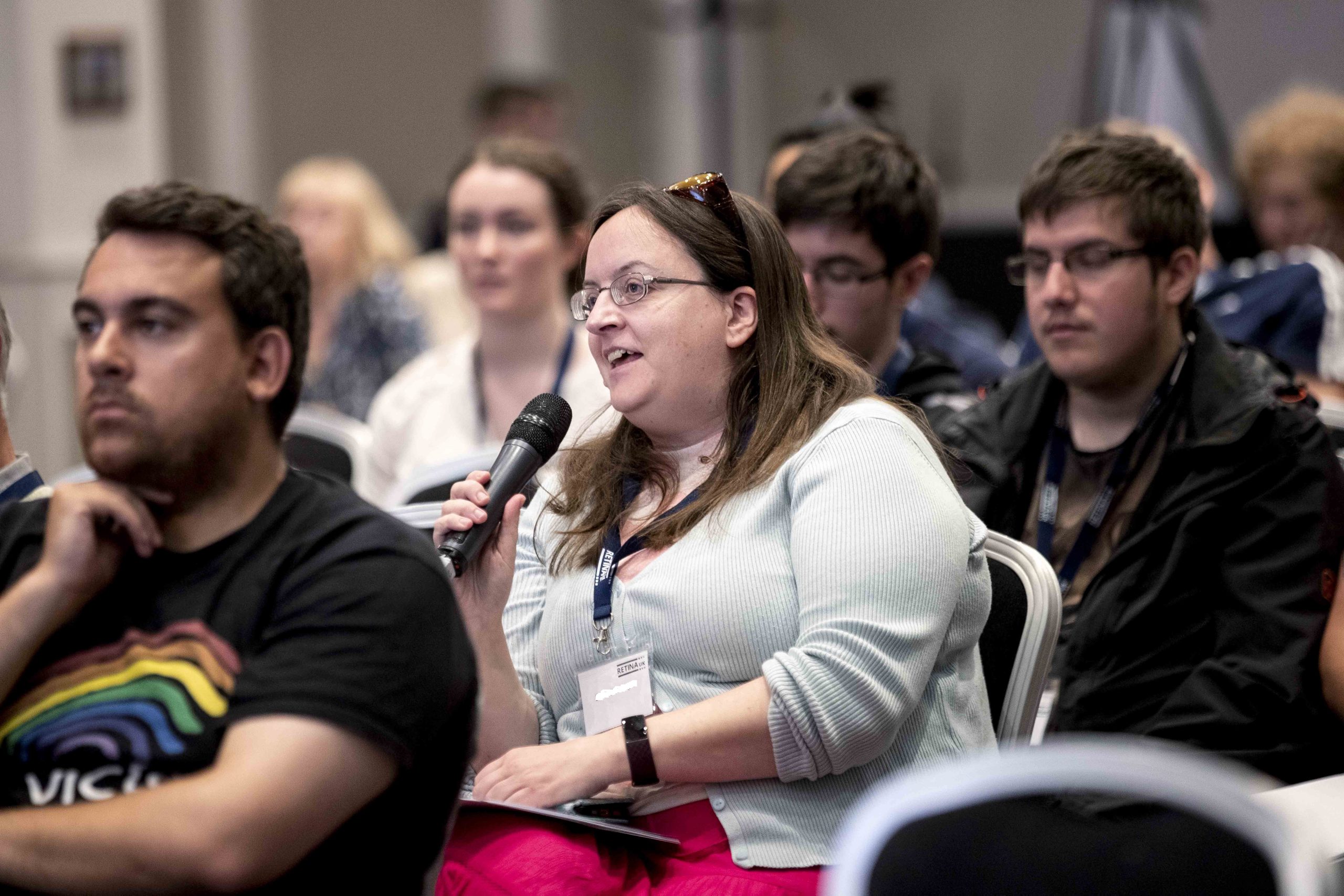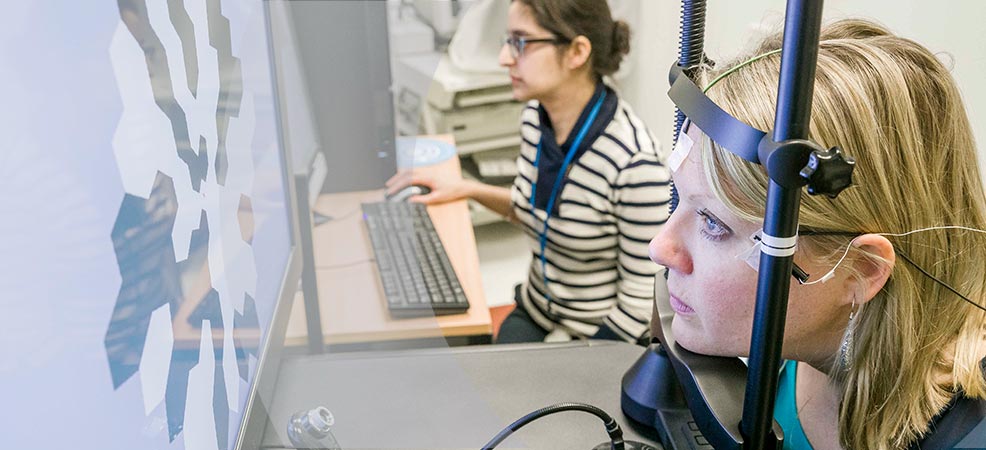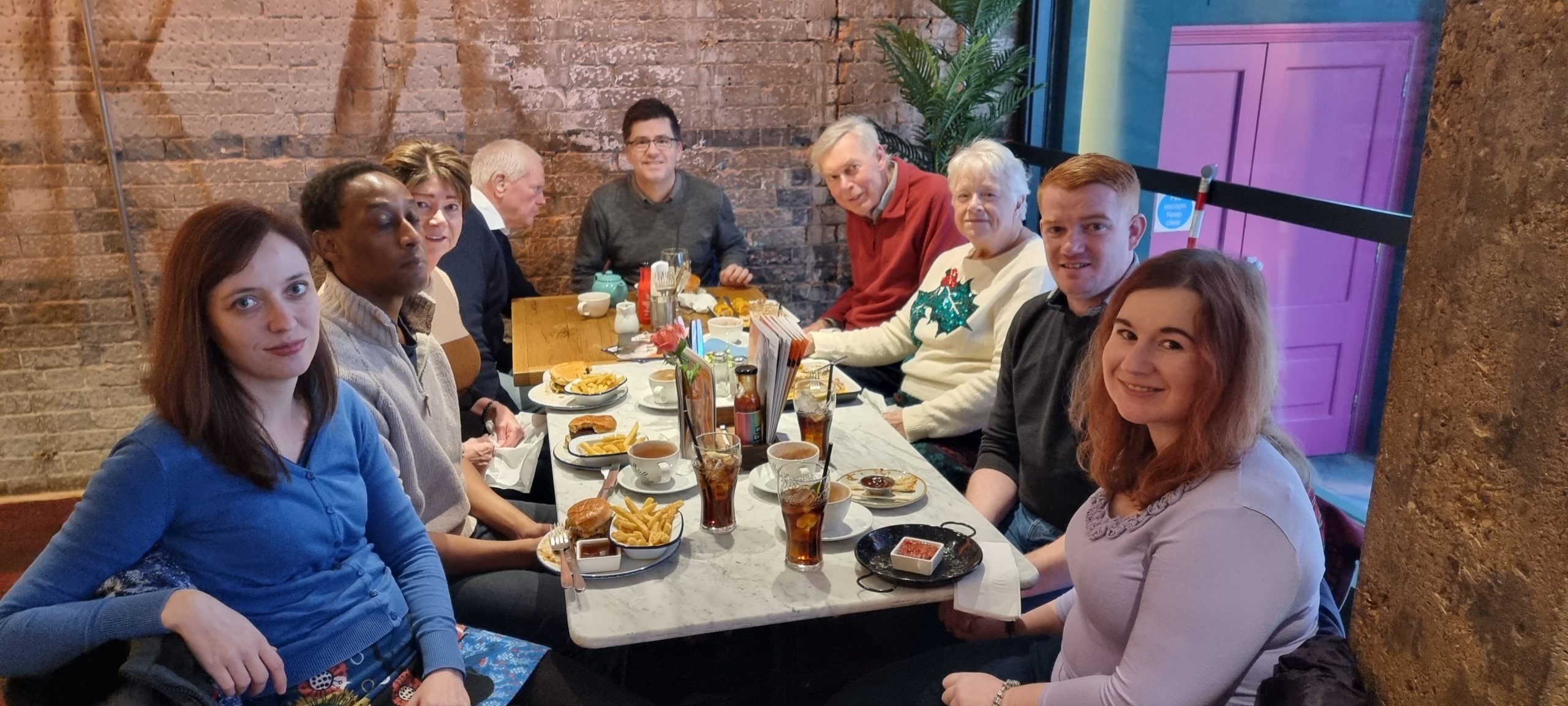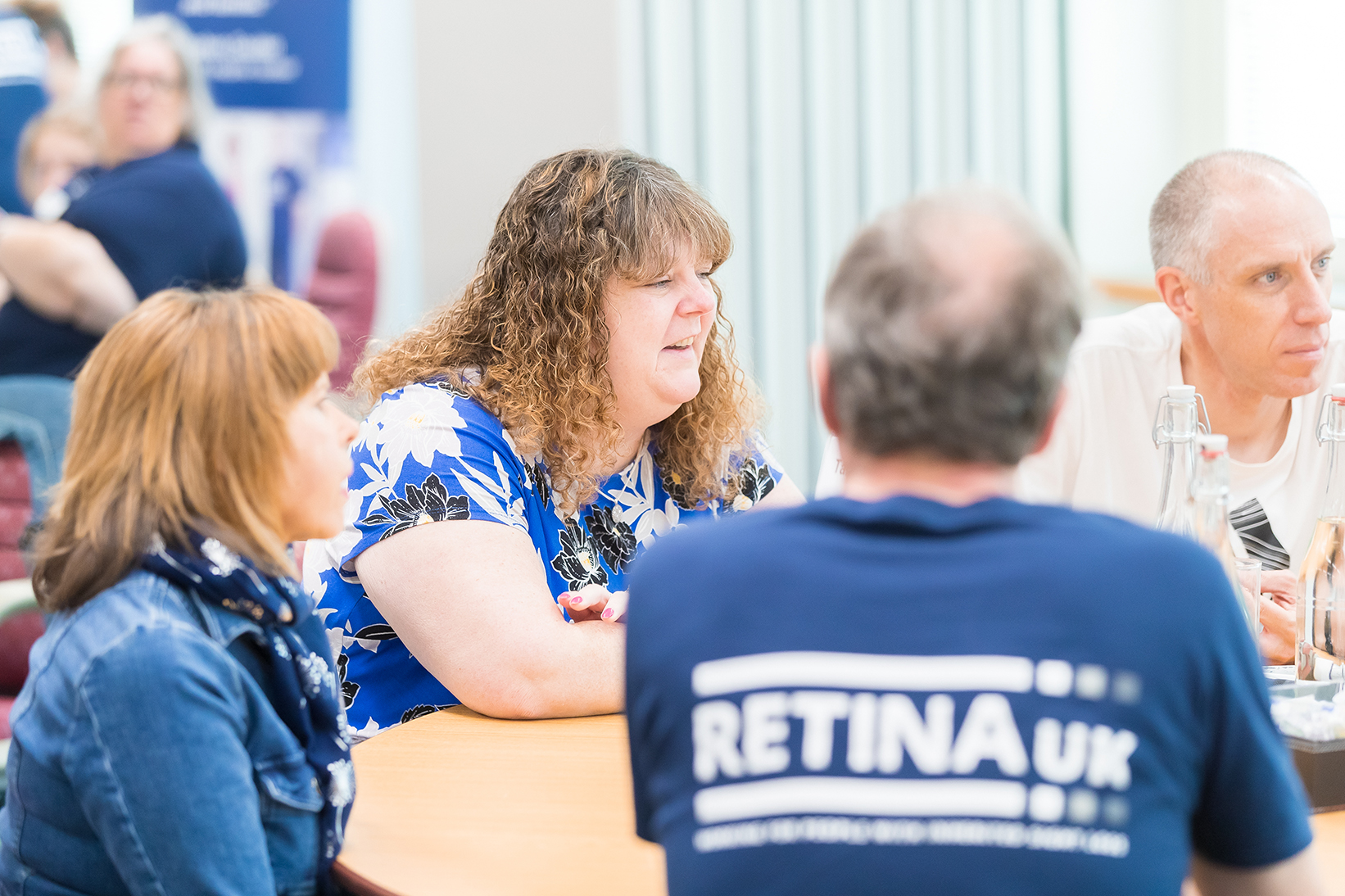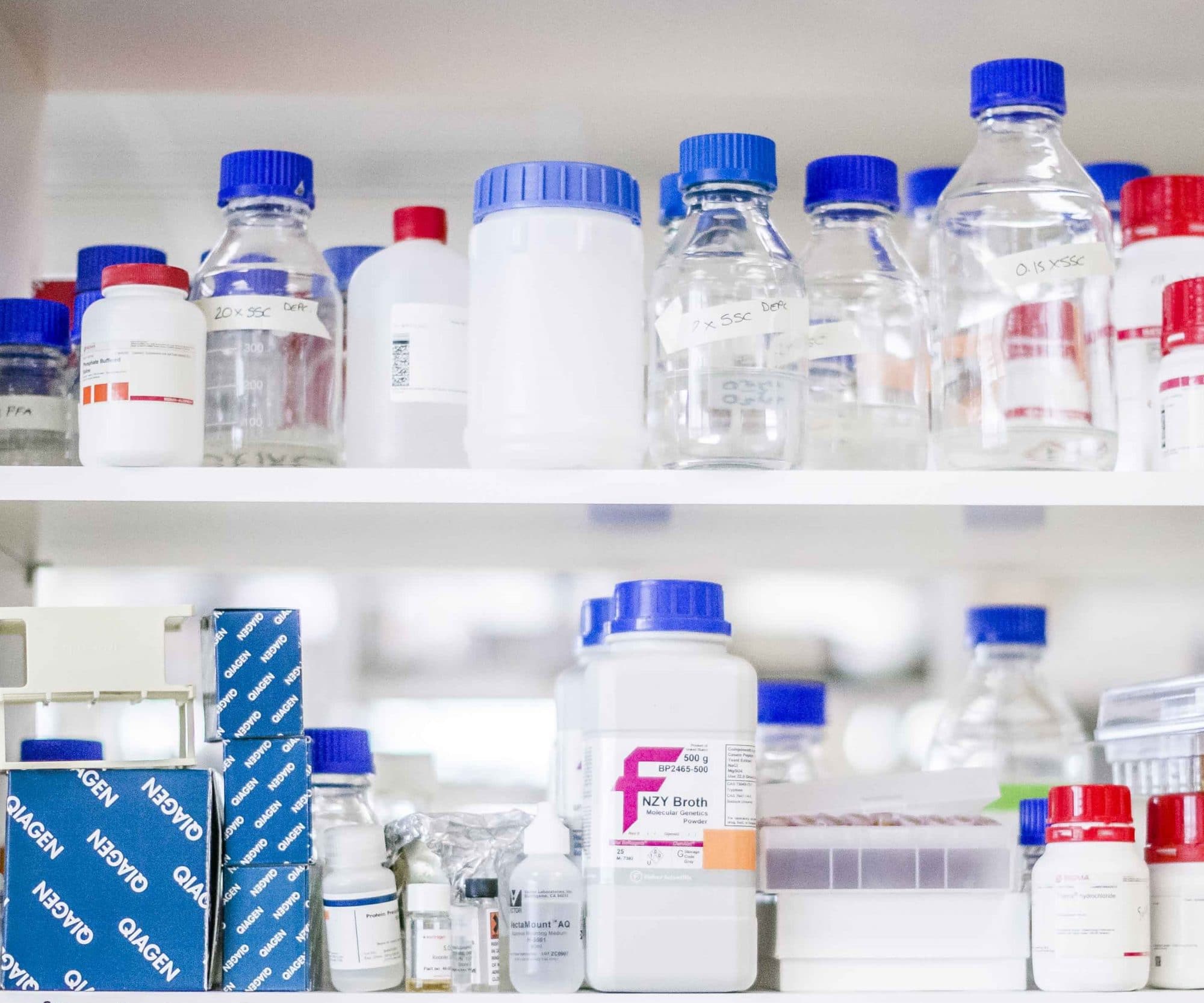The macula is the central part of the retina which is responsible for our central field of vision, colour perception and recognition of fine visual details.
Symptoms
Although the age of onset for those with Best disease can vary, it is usually diagnosed during childhood or adolescence. However, some may only start experiencing symptoms later in life. In the initial stages, a bright yellow accumulation forms under the retinal pigment epithelium (RPE) beneath the macula. The RPE is a layer of cells that provides support for photoreceptors (light sensing cells in the retina).
Upon examination this accumulation looks like a sunny-side-up egg. Despite this material, visual acuity may remain normal or near normal for many years. Peripheral (side) vision usually remains unaffected. In many individuals with Best disease, the yellow material begins to be reabsorbed over time, with areas of fluid and residual material, resulting in some referring to the macula having a ‘scrambled egg’ appearance. During this stage, vision can be affected. With continued reabsorption, there may also be retinal and RPE atrophy (loss) causing further vision loss. The aforementioned yellow material is rich in lipofuscin and related substances.
The visual prognosis is highly variable in Best disease, with considerable variability both within and between families. However, the condition does not always affect both eyes equally. Many individuals retain useful central vision in at least one eye with a visual acuity of about 20/50 in the less-affected eye.
In some cases, Best disease does not progress to cause significant central vision loss. However, retinal specialists can still detect the disease, often by using retinal imaging, and occasionally by measuring the function of the RPE and the retina.
Other symptoms of Best disease include:
- Difficulty recognising colour
- Metamorphopsia – Straight objects (e.g. lamp post) appearing curvy or wavy, or gaps in objects/lines/words
In addition to slow degeneration, Best disease can be complicated by the development of abnormal blood vessels which can bleed/leak suddenly causing acute visual loss. This is a similar process to ‘wet age-related macular degeneration’ and can be treated very effectively using the same injections when delivered promptly. All people with Best disease should check the vision of each eye separately several times a week and if they become aware of a sudden reduction in the quality of vision of one eye they should see their retinal specialist urgently.
Cause
Best disease is one of the most common inherited forms of macular degeneration, affecting approximately 1 in 10,000 people. Best disease is caused by variations in the BEST1 gene. This gene carries information for the production of the protein bestrophin-1, which can be found in the retinal pigment epithelium (RPE), a layer of cells that support the light sensing photoreceptors in the retina.
Best disease is usually inherited in an autosomal dominant pattern, meaning that only one copy of a person’s gene must be faulty for the condition to occur. However, recessive inheritance is also possible, depending on the exact nature of the genetic fault in the BEST-1 gene. This means that both a person’s copies of the gene must be faulty for the condition to occur.
A genetic test can confirm the inheritance pattern of the condition. Find out more at RetinaUK.org.uk/genetics/inheritance-patterns.
Treatment
Current treatment focuses on helping an individual to adapt to their vision loss and optimise the sight they have left. This includes referral to low vision services, regular monitoring of visual function, prescribing glasses (if required), visual aids and assistive technology. Patching treatment may be required if a ‘lazy’ eye is detected in children. This involves patching of the more efficient eye to encourage the weaker eye to work harder. Additionally, protection from sunlight is also important. So wearing hats, UV protected sunglasses or placing sunlight diffusers/ covers is encouraged.
Researchers are exploring a number of approaches to treating sight loss in Best disease. These include gene therapy, which works by introducing a healthy copy of the gene into the appropriate cells to compensate for the faulty gene copy that is not producing enough functional protein. Although gene therapy has shown promising results in animals, more work is still needed before human clinical trials can begin for Best disease.
Clinical trials
Visit RetinaUK.org.uk/medical-research/joining-the-research-effort for clinical trials information. If you are considering joining a trial always discuss it with your usual ophthalmologist or family doctor first. Participation in a genuine clinical trial will never require payment.
You can also read about possible treatment approaches for retinal disease at RetinaUK.org.uk/medical-research/approaches-to-treatment and the latest news about research at RetinaUK.org.uk/research-news.
Many treatment approaches are specific to a particular gene fault, so it is important that those affected by the disease are referred for genetic testing so that they can access new treatments and clinical trial opportunities.
For support
The Retina UK Helpline provides information, support and signposting for people affected by inherited sight loss as well as healthcare and education professionals.
Contact 0300 111 4000 (9.00am – 5.00pm Monday to Friday and Tuesday and Thursday evenings 5.00pm – 8.00pm) or email [email protected].
Condition-specific information
Gene Vision gene.vision/knowledge-base/best-disease-for-patients. Retina UK joint funded Gene Vision and input into accessibility and content.
Getting involved in research
Those who join the Retina UK Lived Experience Panel receive an email from us when we are made aware of participation opportunities such as focus groups, surveys and research projects. Sign up at RetinaUK.org.uk/get-involved/lived-experience.


